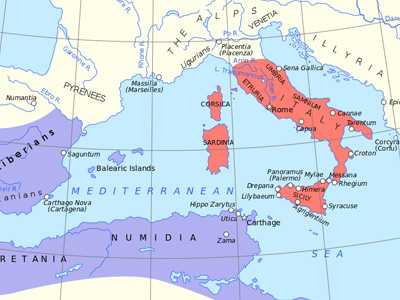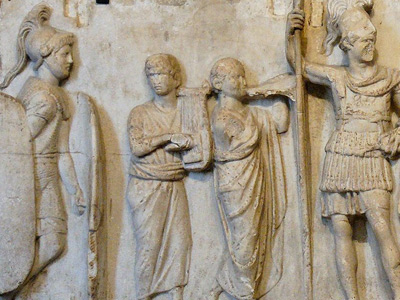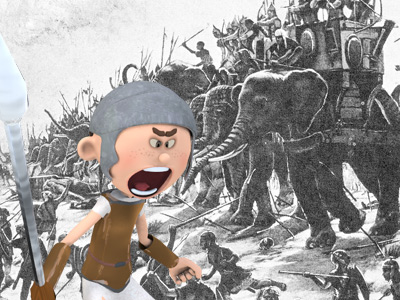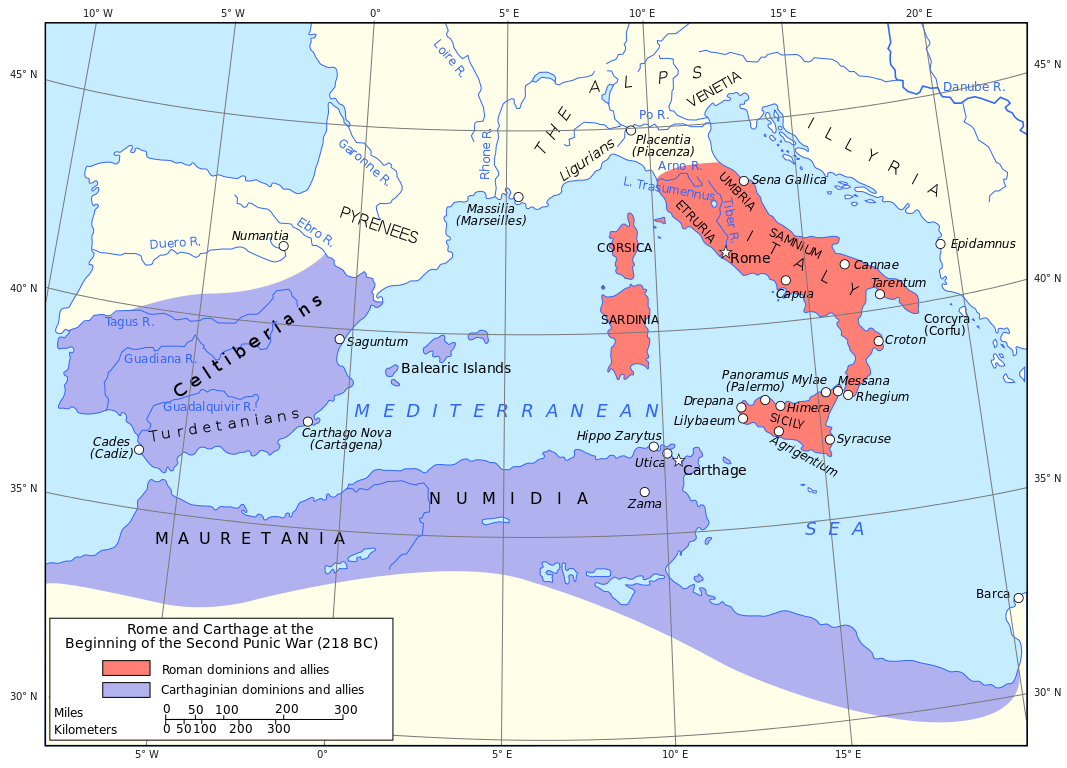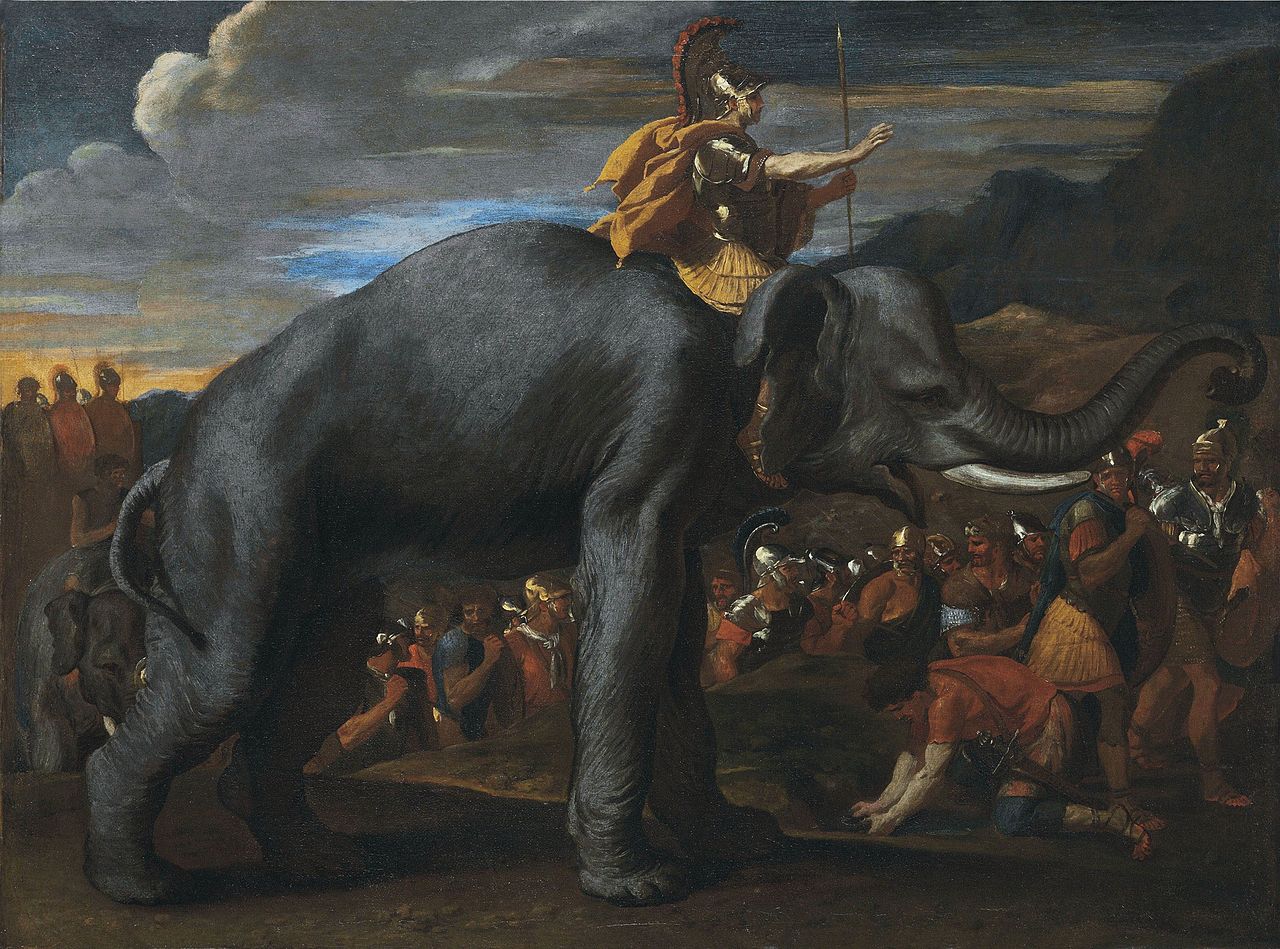Second Punic War (218-201 BC)
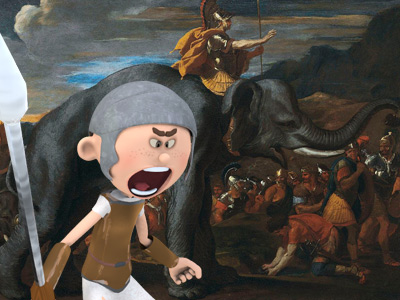
First Roman Expedition to Iberia
The first Roman expedition to Iberia was unable to bring the Carthaginian troops in the hinterland of Massalia to a pitched battle, so it continued on its way to northern Iberia under Gnaeus Cornelius Scipio Calvus, a move which proved decisive for the outcome of the war. Their other commander, Publius Cornelius Scipio, returned to Rome, realizing the danger of an invasion of Italy where the tribes of the Boii and Insubres were already in revolt. After 217 BC, he moved to Iberia.
In Iberia, Carthaginian rule was not popular, but Roman The Roman Republic was a form of government of Rome and the era of the classical Roman civilization when it was run through public representation of the Roman people. Beginning with the overthrow of the Roman Kingdom (traditionally dated to 509 BC) and ending in 27 BC with the establishment of the Roman Empire, Rome's control rapidly expanded during this period - from the city's immediate surroundings to hegemony over the entire Mediterranean world. inaction during the Siege of Saguntum had made the natives cautious about an alliance against their masters. Gnaeus Cornelius Scipio Calvus established his headquarters at Cissa, in the midst of Hannibal's latest acquisition, the area between Ebro and Pyrenees. Despite initial setbacks, he won increasing support among the natives. This convinced the Carthaginian commander Hanno, the nephew of Hannibal
The Roman Republic was a form of government of Rome and the era of the classical Roman civilization when it was run through public representation of the Roman people. Beginning with the overthrow of the Roman Kingdom (traditionally dated to 509 BC) and ending in 27 BC with the establishment of the Roman Empire, Rome's control rapidly expanded during this period - from the city's immediate surroundings to hegemony over the entire Mediterranean world. inaction during the Siege of Saguntum had made the natives cautious about an alliance against their masters. Gnaeus Cornelius Scipio Calvus established his headquarters at Cissa, in the midst of Hannibal's latest acquisition, the area between Ebro and Pyrenees. Despite initial setbacks, he won increasing support among the natives. This convinced the Carthaginian commander Hanno, the nephew of Hannibal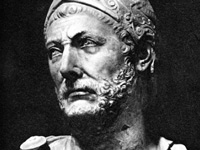 Hannibal Barca (247-183 BC), was a Carthaginian general, considered one of the greatest military commanders in history. Hannibal lived during a period of great tension in the western Mediterranean Basin, when the Roman Republic established its supremacy over other great powers such as ancient Carthage. One of his most famous achievements was at the outbreak of the Second Punic War, when he marched an army which included war elephants from Iberia over the Pyrenees and the Alps into Italy. Hannibal Barca », of the necessity to accept pitched battle before his troops had been united with the army under Hasdrubal, the brother of Hannibal, despite being outnumbered 2 to 1. The result was a Roman victory in the Battle of Cissa in 218 BC. When Hasdrubal finally made it to the scene, he was in no position to fight the Roman army and merely caught their navy personnel off-guard, killing some in the process.
Hannibal Barca (247-183 BC), was a Carthaginian general, considered one of the greatest military commanders in history. Hannibal lived during a period of great tension in the western Mediterranean Basin, when the Roman Republic established its supremacy over other great powers such as ancient Carthage. One of his most famous achievements was at the outbreak of the Second Punic War, when he marched an army which included war elephants from Iberia over the Pyrenees and the Alps into Italy. Hannibal Barca », of the necessity to accept pitched battle before his troops had been united with the army under Hasdrubal, the brother of Hannibal, despite being outnumbered 2 to 1. The result was a Roman victory in the Battle of Cissa in 218 BC. When Hasdrubal finally made it to the scene, he was in no position to fight the Roman army and merely caught their navy personnel off-guard, killing some in the process.
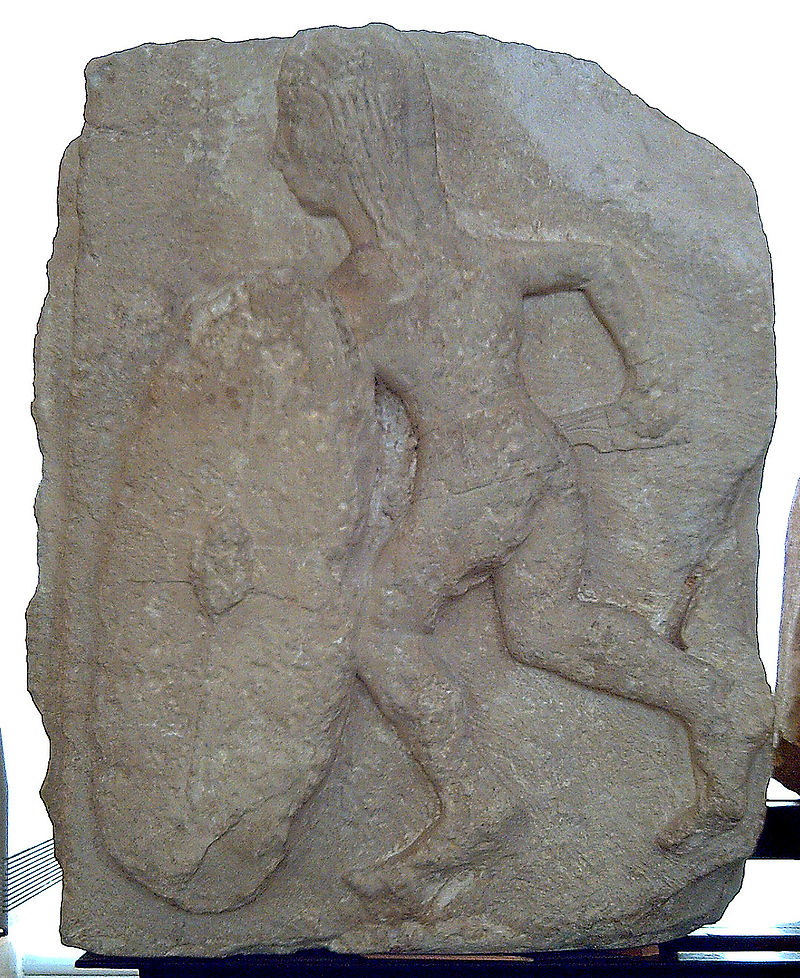
Iberian warrior from bas-relief c. 200 BC. The warrior is armed with a falcata and an oval shield. National Archaeological Museum of Spain, Madrid

The combined Roman and Massalian fleet and army posed a threat to the Carthaginians. Hasdrubal intended to first defeat the fleet. However, his naval forces had a history of failure against the Romans. They had lost all but one major naval engagement in the First Punic War and in 218 BC a naval engagement in the waters of Lilybaeum had been lost despite numerical superiority. For this reason, he moved the army and fleet in unison. The fleet is described as being very disorganized prior to the battle. The army, in the meantime, provided loud moral support and a safe harbour for the ensuing naval Battle of Ebro River. The 40 Carthaginian and Iberian vessels were severely defeated by the 55 Roman and Massalian ships in the second naval engagement of the war, with about three quarters of the Carthaginian fleet captured or sunk and the rest beaching their ships. In the aftermath, the Carthaginian forces retreated, but the Romans were still confined to the area between Ebro and Pyrenees.

Iberian falcata, 4th/3rd century BC. This weapon, a scythe-shaped sword, was unique to Iberia. By its inherent weight distribution, it could deliver blows as powerful as an axe. National Archaeological Museum of Spain, Madrid

Iberian falcata, 4th/3rd century BC. This weapon, a scythe-shaped sword, was unique to Iberia. By its inherent weight distribution, it could deliver blows as powerful as an axe. National Archaeological Museum of Spain, Madrid
( Click image to enlarge)
This blocking force of Romans prevented the Carthaginians from sending reinforcements from Iberia to Hannibal or to the insurgent Gauls in northern Italy during critical stages of the war. Hasdrubal acted by marching into Roman territory in 215 BC and offered battle at Dertosa. In this battle, he used his cavalry superiority to clear the field and to envelop the enemy on both sides with his infantry, a tactic that had been very successfully employed in Italy. However, the Romans broke through the thinned out line in the centre and defeated both wings separately, inflicting severe losses; but, not without taking heavy losses themselves.
While the Romans made little progress in the Iberian theatre, the Scipios were able to negotiate a new front in Africa by allying themselves with Syphax, a powerful Numidian king in North Africa. In 213 BC, he received Roman advisers to train his heavy infantry soldiers that had not yet been able to stand up to their Carthaginian counterparts. With this support, he waged war against the Carthaginian ally Gala. According to Appian, in 213 BC Hasdrubal left Iberia and fought Syphax, though history may have confused him with Hasdrubal Gisco, however, it did use Carthaginian resources. Hasdrubal Gisco is the son of the Gesco who had served together with Hamilcar Barca, Hannibal's father, in Sicily during the First Punic War and son-in-law of Hanno the Elder who was one of Hannibal's lieutenants in Italy.
Related Articles
First Punic War (264-241 BC)
The first of three wars fought between Ancient Carthage and the Roman Republic. For more than 20 years, the two powers struggled for supremacy, primarily on the Mediterranean island of Sicily and its surrounding waters, and also in North Africa. View First Punic War (264-241 BC) »
Second Punic War (218-201 BC)
The Second Punic War, also referred to as The Hannibalic War and (by the Romans) the War Against Hannibal, lasted from 218 to 201 BC and involved combatants in the western and eastern Mediterranean. View Second Punic War (218-201 BC) »
Third Punic War (149–146 BC)
Was the third and last of the Punic Wars fought between the former Phoenician colony of Carthage and the Roman Republic. This war was a much smaller engagement than the two previous Punic Wars and focused on Tunisia. View Third Punic War (149–146 BC) »
HISTORY
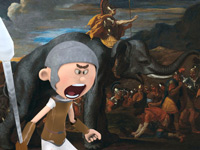
RESOURCES
This article uses material from the Wikipedia article "Second Punic War", which is released under the Creative Commons Attribution-Share-Alike License 3.0.
© Stories Preschool. All Rights Reserved.
